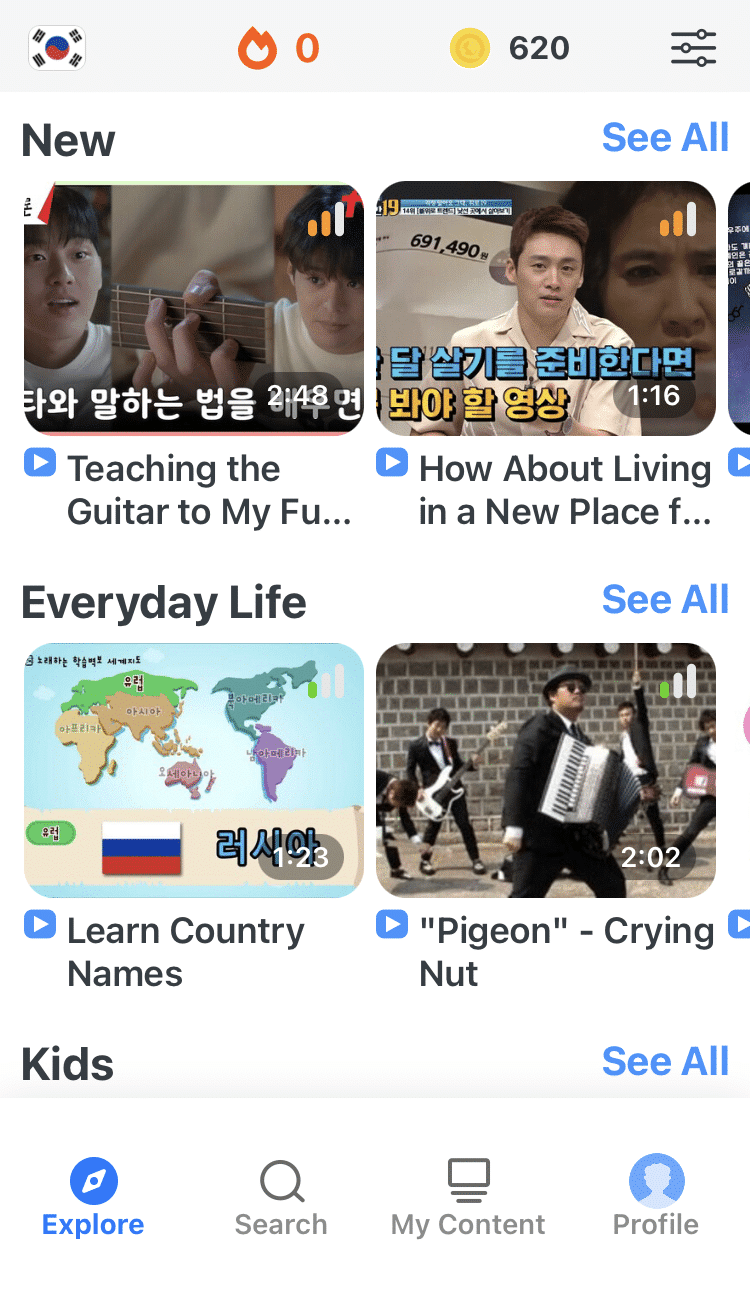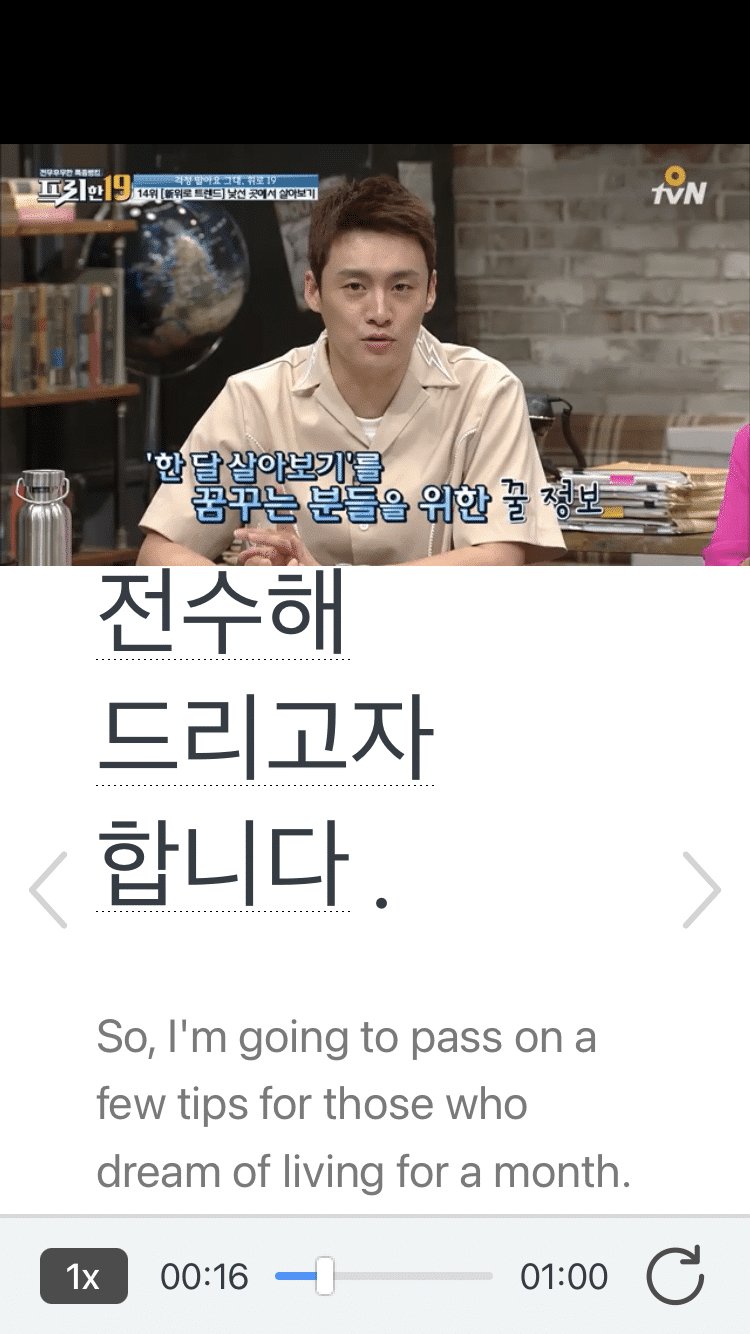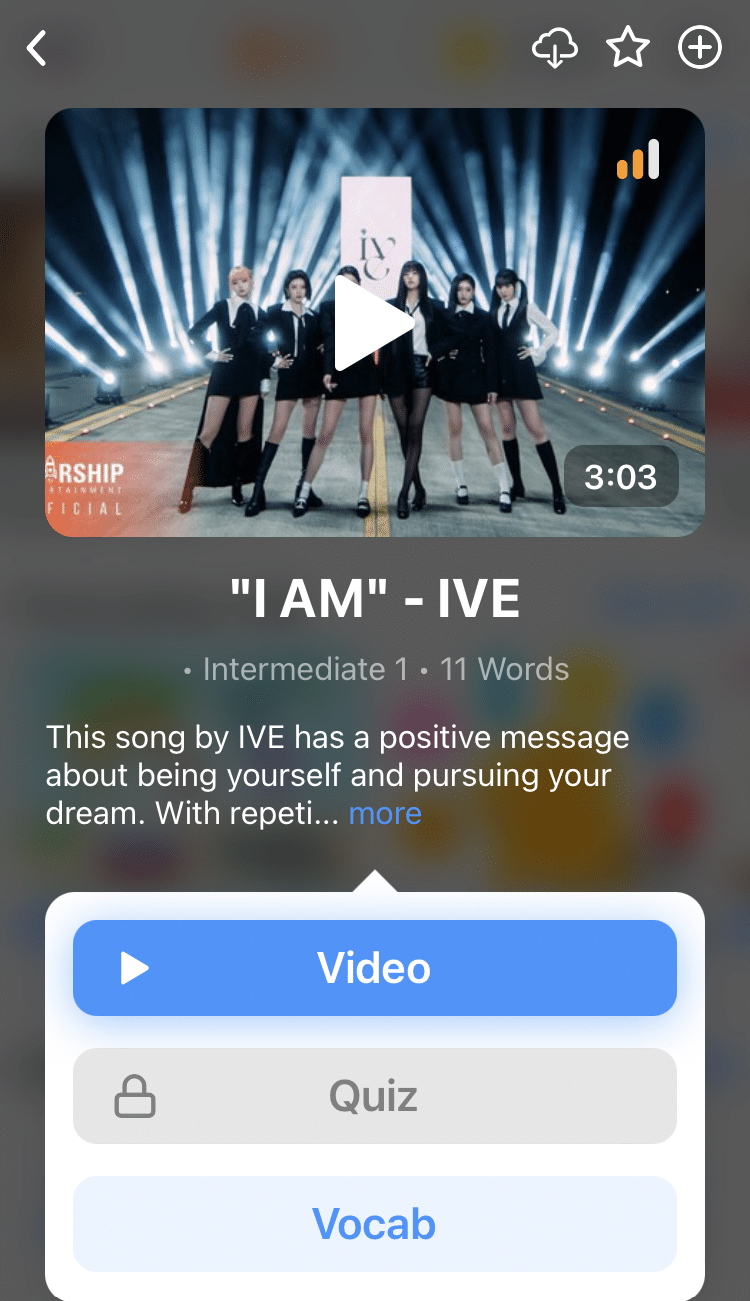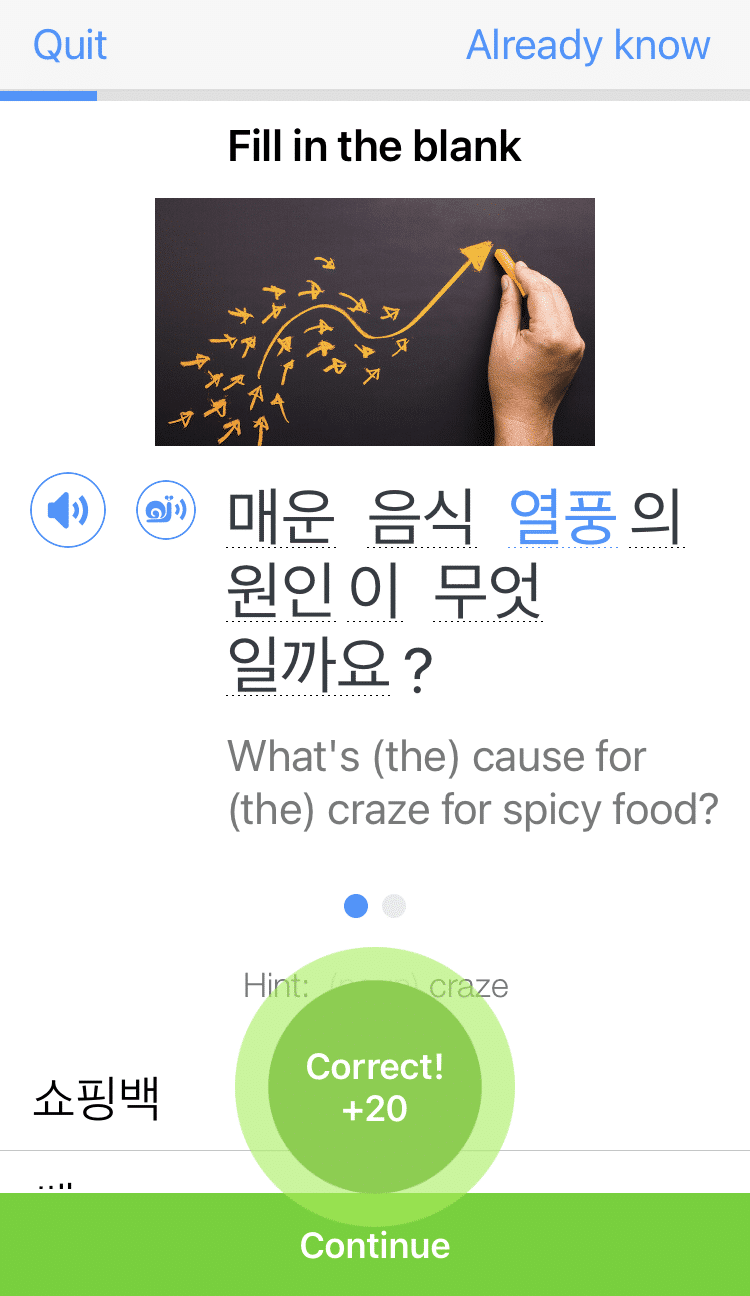
How to Say Good Morning in Korean: 7 Ways to Start Your Day Courteously
After a hearty Korean breakfast of rice with 반찬 (ban-chan) — “side dishes” and a cup of sweet 달고나 (dal-go-na) — “coffee,” all you need to complete your morning is a greeting that will give a good first impression.
Korean greetings are an essential part of the vast world of Korean etiquette. It’s important to know which greetings are appropriate depending on the setting and the people involved.
Here’s a list of some common ways to say good morning in Korean to help you start your day off right!
Contents
- Formal Ways to Say Good Morning in Korean
- Informal Ways to Say Good Morning in Korean
- Frequently Asked Questions About Good Morning in Korean
- And One More Thing...
Download: This blog post is available as a convenient and portable PDF that you can take anywhere. Click here to get a copy. (Download)
Formal Ways to Say Good Morning in Korean
1. 안녕하세요 (ahn-nyung-ha-se-yo)
English: Hello
You may already know this one! It’s the standard Korean way of saying “Hello,” but it’s also used as the most common way to greet someone in the daytime.
In fact, it’s actually more frequently used than most morning-specific greetings!
This phrase is formal due to the inclusion of 하세요, which is an imperative that orders someone to do something. 요 is a Korean honorific word that, when added to the end of a phrase or sentence, makes it more respectful in nature.
The first part, 안녕, translates as “peace.” So, when translated more literally, 안녕하세요 essentially means you’re wishing someone to “be at peace.”
Use 안녕하세요 for your elders, those with whom you’re less familiar, your social superiors (such as your boss and workplace seniors) and other folks that deserve a higher degree of respect.
An even more formal version of this phrase is 안녕하십니까 (ahn-nyung-ha-shim-ni-kka). The ending 하십니까 indicates very high respect.
This extra-formal version is rather exclusive in its use, so you probably won’t have a frequent need for it. However, it can also be used in a sarcastic, humorous manner among friends—I myself have used it to greet someone who luxuriously overslept and ended up late to a meetup!
2. 잘 잤어요? (jal jat-ssuh-yo)
English: Did you sleep well?
This greeting takes the form of a polite question. It’s formal and appropriate for your social superiors, elders and acquaintances. It works for anyone you wish to treat with more respect, even if you consider them your friend.
You can answer this question with 네 (ne) — “Yes” or 네, 잘 잤어요 (ne, jal jat-ssuh-yo) — “Yes, I slept well.”
안녕히 주무셨어요? (ahn-nyung-hi ju-mu-shyut-ssuh-yo) is the even more formal version of this phrase. The main difference is in the verb conjugation.
The 주무셨 that replaces the 잤 is a conjugation of the verb 주무시다 (ju-mu-shi-da) — “to sleep.” 주무시다 is a much more formal version of the verb 자다 (ja-da) — “to sleep,” the conjugated form of which is 잤 in our original phrase.
3. 좋은 아침이에요 (joh-eun ah-chi-mee-eh-yo)
English: It’s a good morning
This phrase is probably the closest equivalent to the English “Good morning.”
However, it’s not used as often as you’d expect. The generic 안녕하세요 (mentioned above) and 안녕 (mentioned next) are actually the more frequently-used morning greetings.
좋은 아침이에요 is still a nice and rather joyful-sounding formal greeting, though, so you can certainly put it to use! It can also work as a comment on the actual status of the day—like a way of saying that the morning (the weather, for example) is quite pleasant.
Informal Ways to Say Good Morning in Korean
4. 안녕 (ahn-nyung)
English: Hello
Simply removing 하세요 from our first entry, 안녕하세요, will give you a casual and more informal way to say “hello.”
안녕 is a very commonly-used greeting among friends and when addressing those who are close to or younger than you in age.
I personally like it because it’s short and quick to say. And for someone like me, who yawns more than talks in the morning, that matters!
By the way, 안녕 can also be used to mean “goodbye.” It serves a dual purpose—talk about convenient!
5. 잘 잤어? (jal jat-ssuh)
English: Did you sleep well?
Again, simply removing the honorific ending 요 from 잘 잤어요 above will give you its more informal equivalent.
Use this question for your friends and those that are close to you—essentially, the folks that you don’t have to be so formal and respectful around.
Instead of just saying it outright to someone first thing in the morning, I occasionally ask this question after a more neutral greeting, such as 안녕. It’s not necessary, but if you prefer to start conversations with a “Hello” rather than a question, then you can do the same!
6. 좋은 아침 (joh-eun ah-chim)
English: It’s a good morning
This is the less formal version of 좋은 아침이에요 that you can use to casually greet your buddies in the early hours.
I personally think of it as equivalent to the simple English greeting “Morning.” But again, it can also work to comment on the morning itself.
7. 굿모닝 (guun-mo-neeng)
English: Good morning
This is a Konglish (Korean-English) greeting. It’s quite literally a Korean phonetic spelling of the English “Good morning.” Because of this, none of the words actually have a standard Korean meaning!
You probably wouldn’t use this greeting in real-life with someone (especially not to anyone who deserves a bit more respect). It belongs in the domain of slang.
However, you can find this phrase used in online spaces and text messaging. Etiquette isn’t as critical in these realms, so if you want to better fit in online or understand “hip” Korean Internet talk, this greeting is a good one to know.
A good way to make sure you’re using the correct “good morning” is to consume plenty of authentic Korean content, like that on FluentU.
FluentU takes authentic videos—like music videos, movie trailers, news and inspiring talks—and turns them into personalized language learning lessons. You can try FluentU for free for 2 weeks. Check out the website or download the iOS app or Android app. P.S. Click here to take advantage of our current sale! (Expires at the end of this month.)
Frequently Asked Questions About Good Morning in Korean
Is 좋은 아침 a common greeting?
좋은 아침 is a closer translation of the English “good morning” however, it is not very widely used. You may see it more often in texting or other casual settings, but a lot of the time, more standard greetings like 안녕하세요 will be used.
How to say “good night” in Korean
One common way to express “good night” in Korean is 잘 자요, which literally means “sleep well.” However, there are several other phrases you can use depending on the formality of the situation. Check out this post here to find out more about how to say “good night” in Korean.
What is a typical Korean greeting?
A typical Korean greeting that works well for a range of situations is 안녕하세요, which is a standard way of greeting people in a formal or polite situation. But if you want to use more varied greetings, you can check out this post to learn more ways to say “hello” in Korean!
Morning greetings may seem like easily forgettable parts of your day, but they’re polite staples to everyday life.
And because Korean culture values respect so much, it’s always a good idea to know which greeting you can use for whom. You don’t want to put a damper on the early hours of someone’s day because you used the wrong phrase!
So now that you know how to wish everyone a “good morning” in Korean (and you’ve had your coffee), you’re ready to start your day!
Download: This blog post is available as a convenient and portable PDF that you can take anywhere. Click here to get a copy. (Download)
If you enjoyed this post, you're already halfway to having the time of your life learning Korean with FluentU!
FluentU makes it possible to learn with K-pop videos, funny commercials, entertaining web series and more. Just a quick look will give you an idea of the variety of FluentU videos on offer:
FluentU really takes the grunt work out of learning languages, leaving you with nothing but engaging, effective and efficient learning. It's already hand-picked the best videos for you (which are organized by level and topic), so all you have to do is simply choose any video that strikes your fancy to get started.
Each word in the interactive captions comes with a definition, audio, image, example sentences and more.
Access a complete interactive transcript of every video under the Dialogue tab, and easily review words and phrases from the video under Vocab.
You can use FluentU’s unique Quiz Mode to learn the vocabulary and phrases from the video through fun questions.
FluentU keeps track of what you're learning, and tells you exactly when it's time for review, giving you a 100% personalized experience.
Review sessions use video context to help embed the words in your memory.
Start using the FluentU website on your computer or tablet or, better yet, download the FluentU app from the iTunes or Google Play store. Click here to take advantage of our current sale! (Expires at the end of this month.)
And One More Thing...







